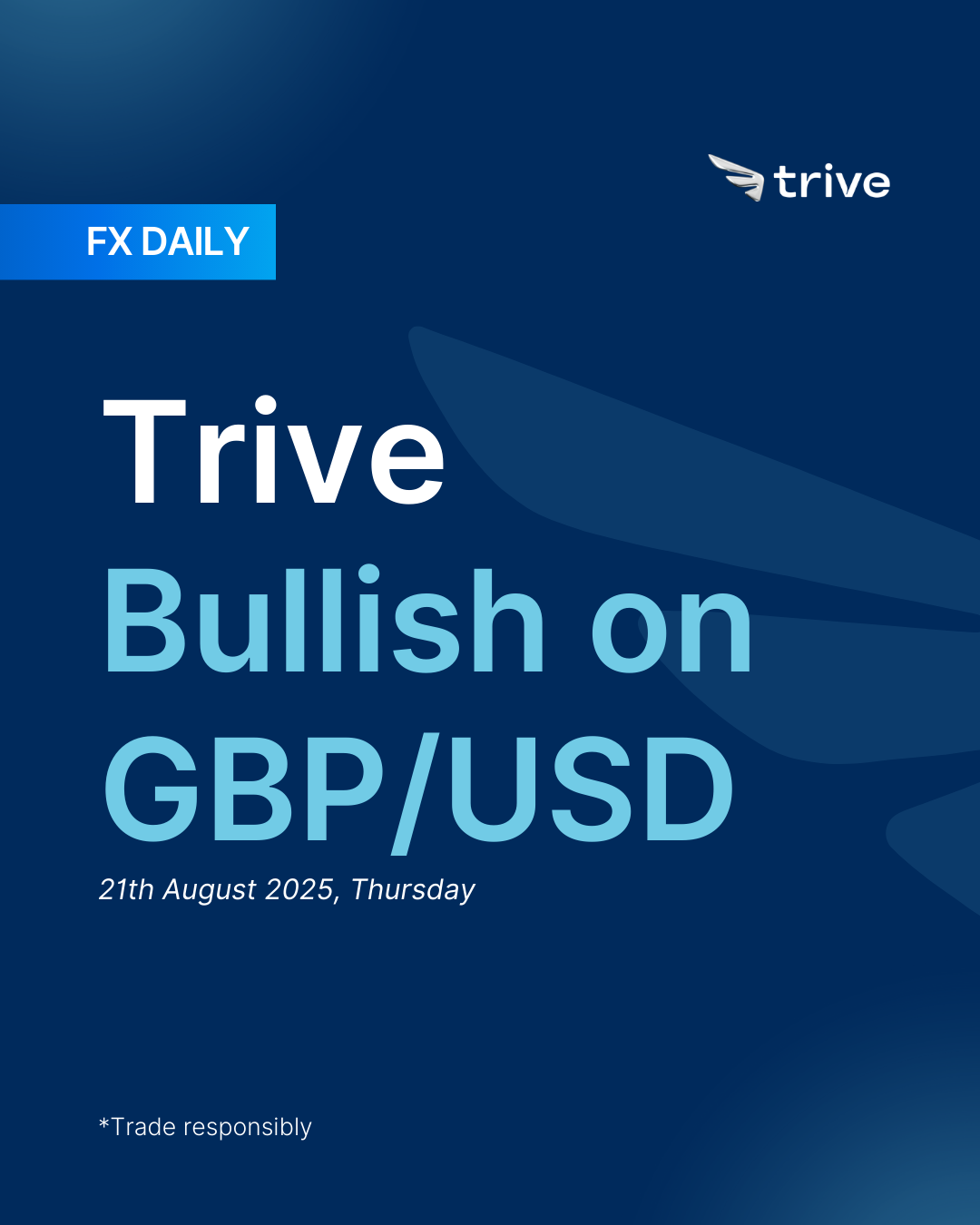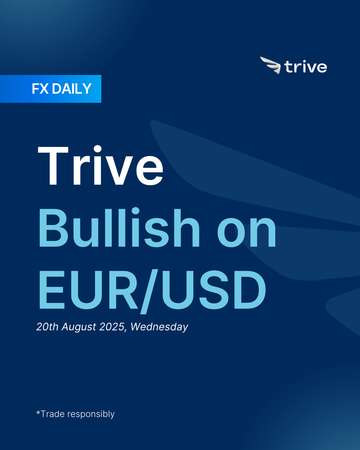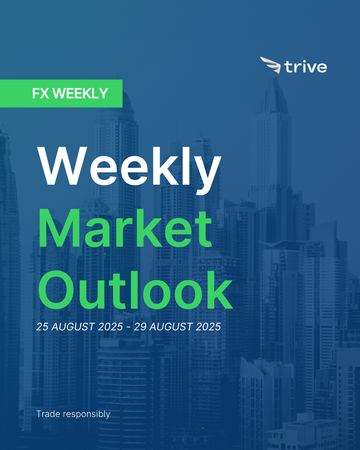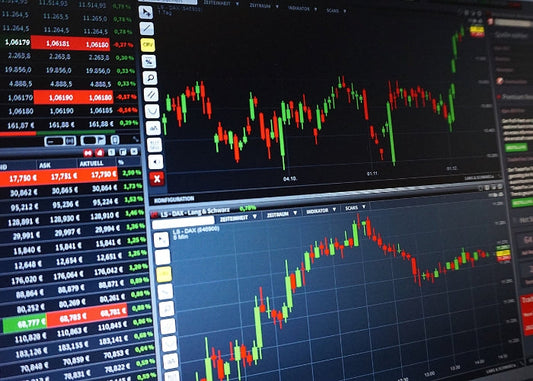FX Daily: Trive Bullish on GBP/USD

Sterling outperformed on strong UK jobs and GDP data, easing recession fears and sharply reducing BoE cut expectations. November cut odds fell to 28%, with easing pushed into 2026. The domestic backdrop remains resilient, keeping GBP supported even during USD volatility. Focus now shifts to inflation data — a firm print should reinforce BoE caution and extend GBP gains. With the Fed leaning dovish after weak labor data, GBP/USD bias stays bullish near term, though growth risks may cap longer-term upside.
GBP: Remain supported
The British Pound was one of the strongest G10 performers during the week, defying recession concerns as a series of robust domestic data releases forced markets to rethink Bank of England rate cut expectations. Sterling started the week on steady footing, but its rally accelerated on Tuesday after the UK labour market report proved more resilient than anticipated. While signs of softening were still present, the unemployment rate held steady and employment growth came in stronger than expected, suggesting the slowdown was not as sharp as feared. Momentum built further on Thursday when second-quarter GDP data showed the economy grew by 0.3% quarter-on-quarter, triple the consensus forecast. The combination of stronger jobs and growth shattered the narrative of an economy on the brink, pushing GBP/USD through the 1.3500 level to a peak near 1.3600. Despite the volatile swings in the US Dollar later in the week, the Pound held its ground thanks to its strong domestic backdrop, finishing near its highs as markets aggressively scaled back expectations for BoE easing. Attention now turns to next week’s inflation data, which will be key for Sterling’s near-term direction.
The GDP release was the week’s main highlight. Growth came in at 0.3% quarter-on-quarter compared to expectations of 0.1%, while the June monthly print surged 0.4% against a forecast of 0.1%. Although some of the expansion was attributed to less sustainable government spending, the strong headline number boosted sentiment and eased recession fears. The positive tone was set earlier by the June jobs report, where the unemployment rate held at 4.7% and employment rose by 238k, stronger than forecasts. This suggested the labour market, while cooling, remained more resilient than expected. The housing market was the only notable weak spot, with the July RICS survey dropping to -13 from -7, but this was largely overlooked in light of the broader strength in jobs and growth.
The data shifted the Bank of England outlook significantly. By the end of the week, the implied probability of a November rate cut had dropped to just 28%, with the next full 25bps reduction not priced in until March 2026. With growth and employment showing resilience, the focus has shifted firmly to inflation. Given the hawkish dissent at the August BoE meeting, which emphasized lingering inflation risks, next week’s CPI release is now seen as the most important test for Sterling.
Market sentiment also supported the Pound. Unlike the Euro, which traded almost entirely as a passenger to US Dollar moves, Sterling’s rally was driven by its own strong data. This allowed it to outperform peers and maintain strength even during the dollar’s post-PPI surge. A supportive factor in the background was the fiscal outlook, as stronger GDP growth was viewed as providing Chancellor Reeves with additional fiscal space, easing concerns about the so-called “black hole” in the UK’s finances ahead of the Autumn Budget.
As of Saturday, the markets assign a 97% probability to holding rates steady and a 3% probability to a 25-bps rate cut at the September 18th meeting. The interest rate path is higher compared to last week, and the markets are pricing in 30-bps of rate cuts over the next five meetings.
Sterling has been holding firm after the BoE’s hawkish surprise, with the close vote and tougher inflation tone prompting a rethink on the pace of cuts and triggering short covering before momentum cooled as growth worries and event risk crept back in. The move was underpinned by resilient UK data, with stronger-than-expected jobs and GDP numbers easing recession fears and forcing markets to sharply scale back November cut expectations. This kept Sterling among the better G10 performers, with attention now shifting to next week’s inflation data as the next key test.
Near term, our bias remains bullish. The split vote and inflation risk messaging should keep dips supported while positioning normalizes, provided broader risk stays steady and incoming data doesn’t undercut the narrative.
Looking further out, we lean weak bearish. Growth headwinds, the risk of a November cut, and fiscal uncertainty argue for fading strength once the BoE impulse fades, especially if global risk softens. Net-net, modest upside in the coming weeks, then a softer tone thereafter. The upcoming inflation report is the swing factor: firm inflation and strong PMI’s would validate the BoE’s caution and keep GBP supported, while any cooling would revive cut expectations and likely cap the bounce.
USD: Bearish
The US Dollar had a volatile week, caught between expectations of rate cuts and a sudden surge in inflation concerns. The DXY started the week under pressure, sliding towards 97.50 after July CPI data on Tuesday came in “not as bad as feared,” reinforcing market conviction for a September Fed rate cut. This dovish sentiment was amplified mid-week when Treasury Secretary Bessent suggested a larger 50bps cut, which pushed the dollar to its weekly lows. However, the narrative shifted entirely on Thursday after a shockingly hot Producer Price Index report showed both headline and core PPI surging by 0.9% month-on-month, far above forecasts. This reignited inflation fears and triggered a sharp reversal, sending the dollar back above 98.00 as traders scaled back expectations for aggressive Fed easing. The week ended with mixed data and markets on edge ahead of a key Trump-Putin summit, leaving the dollar caught between rate cut hopes and renewed inflation anxiety.
The July CPI report came in largely as expected, with headline inflation rising 0.2% month-on-month and core up 0.3%. While annual core inflation was slightly hotter at 3.1%, the report was viewed as manageable and did not derail expectations for a September rate cut, which weighed on the dollar early in the week. Thursday’s PPI report was the turning point, as both headline and core rose an astonishing 0.9% month-on-month compared to 0.2% expected, lifting the annual core rate to 3.7%. The data suggested producer costs were passing through aggressively, especially in services, fueling inflation worries. Friday brought a mix of signals, with retail sales meeting expectations at 0.5% month-on-month and the control group beating forecasts, but consumer sentiment in the University of Michigan survey fell sharply to 58.6, well below expectations. Inflation expectations in that survey jumped to 4.9% for one year and 3.9% for five years. Import prices also came in hot at 0.4% month-on-month, while jobless claims remained steady at 224k, showing the labor market is cooling but not collapsing.
Fed policy expectations shifted wildly through the week. After the CPI report, markets fully priced in a 25bps September cut and left some room for a possible 50bps move. Following the hot PPI report, the probability of a 25bps cut slipped below 100% to around 94%, and the idea of a 50bps cut was erased. By the end of the week, expectations for total cuts this year were scaled back to around 55bps. Treasury Secretary Bessent added to the swings by initially calling for a 50bps cut, which boosted dovish sentiment, but later clarified that the Fed might start with 25bps and adjust later. Several Fed officials pushed back against aggressive easing. Goolsbee noted his unease about inflation, Daly said she no longer described the labor market as “solid” and argued against a 50bps cut, and Musalem also dismissed the idea of such a large move. Speculation around the next Fed Chair added another layer, with names floated such as David Zervos, Rick Rieder, and Marc Sumerlin, all of whom have advocated for rate cuts, creating political pressure on the Fed.
Trade and geopolitical developments also shaped sentiment. The focus late in the week was on the Trump-Putin summit in Alaska, which the White House downplayed as a “feel-out meeting,” adding to uncertainty. Trade policy remained central after the hot PPI data suggested tariffs were driving inflationary pressures. Fed officials acknowledged the stagflationary risks of tariffs, and President Trump announced new tariffs on steel and chips would take effect the following week. Earlier in the week, some calm came from news that the US would extend its trade truce with China by 90 days to November 9th.
As of Saturday, the markets assign an 85% probability to a 25-bps rate cut and a 15% probability that the Fed will hold rates steady at its September 17th meeting. The interest rate path is higher compared to last week, and the markets are pricing in 74-bps of rate cuts over the next five meetings.
At the time of writing, the Trump–Putin meetings are still ongoing, and the dollar’s reaction could go either way depending on the outcome. A constructive outcome, such as signs of easing geopolitical tensions, could weigh on the dollar as investors move toward riskier assets. On the other hand, if the talks end without progress or highlight further uncertainty, safe haven currencies could strengthen as markets seek safety.
In our view, the recent NFP report was weak enough to mark a clear shift in sentiment for the US Dollar. The headline miss was significant on its own, but the large downward revisions to previous months made it even harder to ignore. It looks increasingly clear that the labor market is losing momentum faster than the Fed anticipated.
Because of that, we continue to see a September rate cut as the most likely outcome. The Fed has tried to strike a more cautious tone, Powell recently pushed back against near-term cuts, but the data simply doesn’t support that stance anymore. Markets have flipped aggressively, and nearly 60bps of easing are now priced in by year-end.
We don’t think the US economy is collapsing. Wage growth remains decent, and there’s no sign of a major demand shock. But with job creation slowing and the unemployment rate edging higher, the Fed has enough justification to ease in September, especially with geopolitical risks and tariffs adding to the pressure.
The inflation scare from the hot PPI print does pose a risk, and if markets decide to ride that narrative, the dollar could grind a bit higher. Still, we believe growth concerns and dovish Fed expectations will likely cap sustained upside. This leaves the dollar vulnerable to selling pressure once the initial inflation-driven momentum fades.
This week brings several risk events that could shape the narrative, including Tuesday’s FOMC Minutes, Thursday’s PMIs, the Jackson Hole Symposium, and Powell’s speech on Friday. We’re maintaining our bearish baseline bias on the dollar heading into these events, but if the PMIs surprise to the upside and the FOMC Minutes strike a hawkish tone, we could reconsider our outlook.

GBP/USD 4H
Disclaimer
This material is provided for informational purposes only and does not constitute financial, investment, or other advice. The opinions expressed in this material are those of the author and do not necessarily reflect the views of Trive International. No opinion contained in this material constitutes a recommendation by Trive International or its author regarding any particular investment, transaction, or investment strategy. This material should not be relied upon in making any investment decision.
The information provided does not consider the individual investment objectives, financial situation, or needs of any specific investor. Investors should seek independent financial advice tailored to their individual circumstances before making any investment decisions. Trive International shall not be liable for any loss, damage, or injury arising directly or indirectly from the use of this information or from any action or decision taken as a result of using this material.
Trive International may or may not have a financial interest in the companies or securities mentioned. The value of investments may fluctuate, and investors may not get back the amount they originally invested. Past performance is not indicative of future results.
For more information about Trive International, please visit http://trive.com/int
Additional Information
Investing involves risk, including the potential loss of principal. Diversification and asset allocation strategies do not ensure a profit or guarantee against loss. The content in this material is subject to change without notice and may become outdated or inaccurate over time. Trive International does not undertake any obligation to update the information in this material.
By accessing this material, you acknowledge and agree to the terms of this disclaimer. If you do not agree with these terms, please refrain from using this information.
No comments
Home
Trive
TriveHub





0 comments